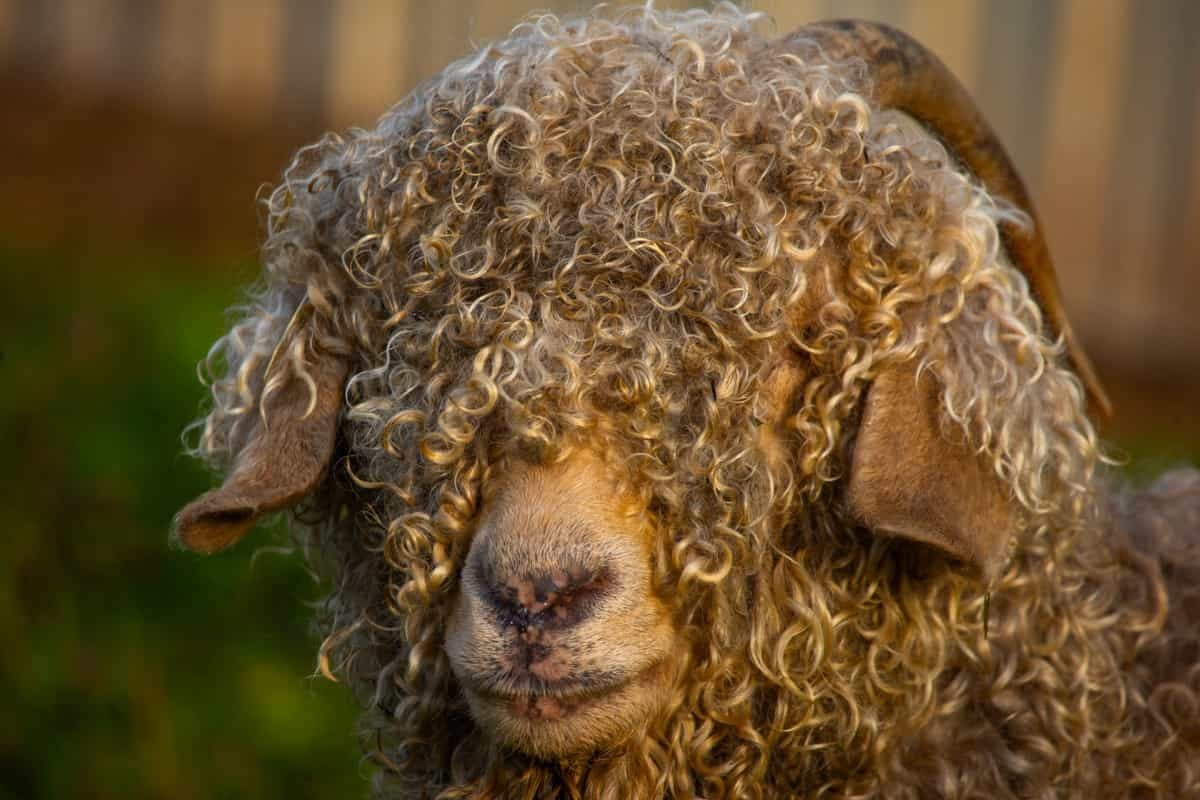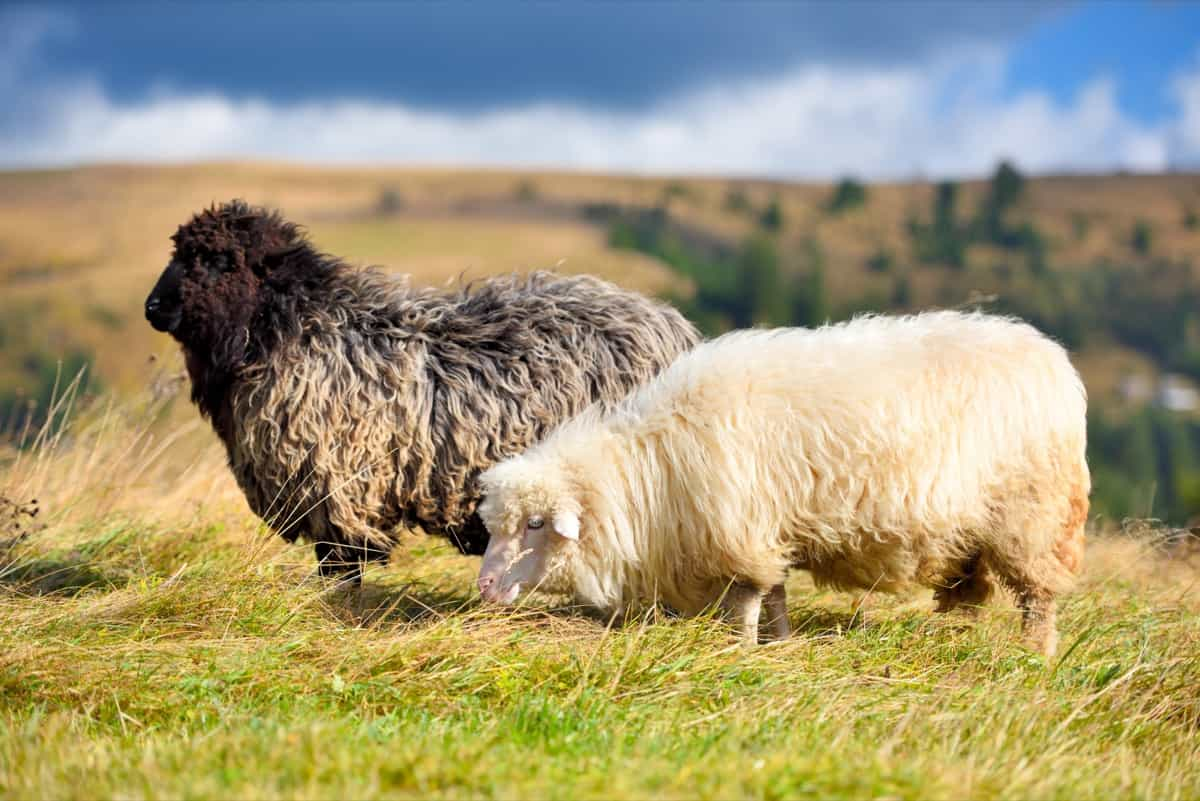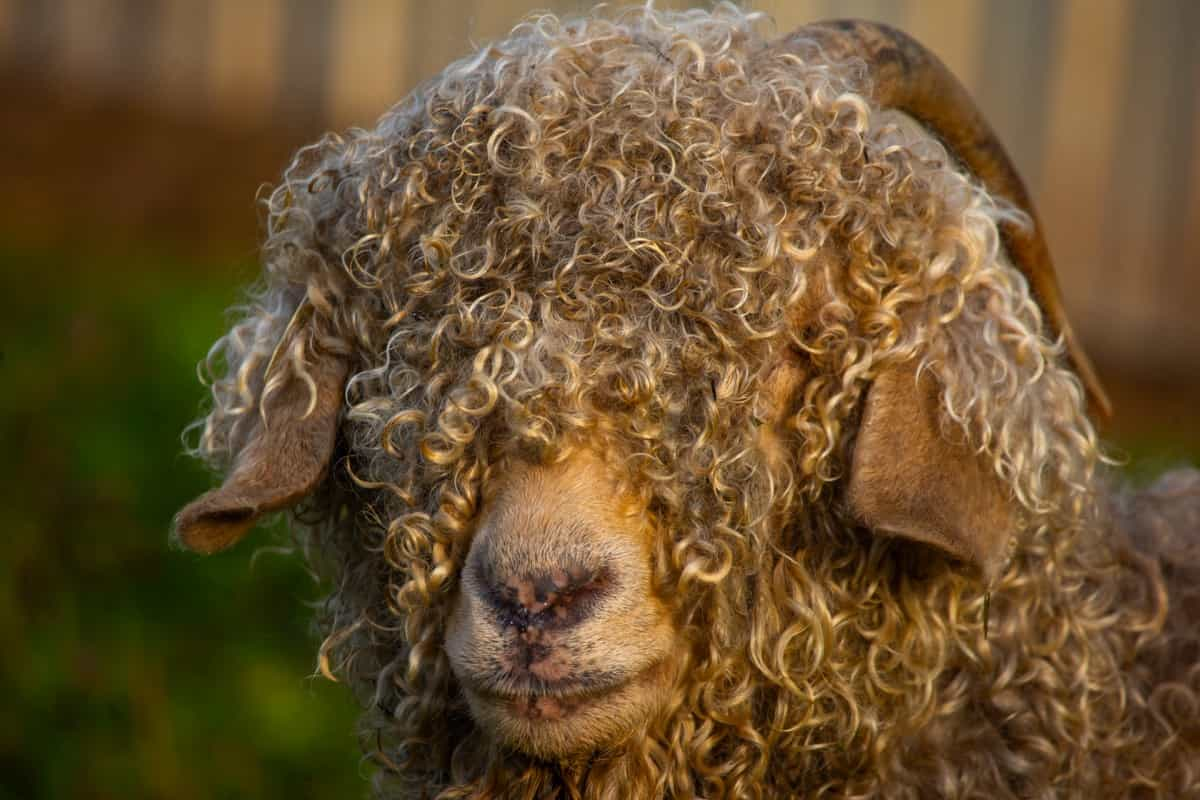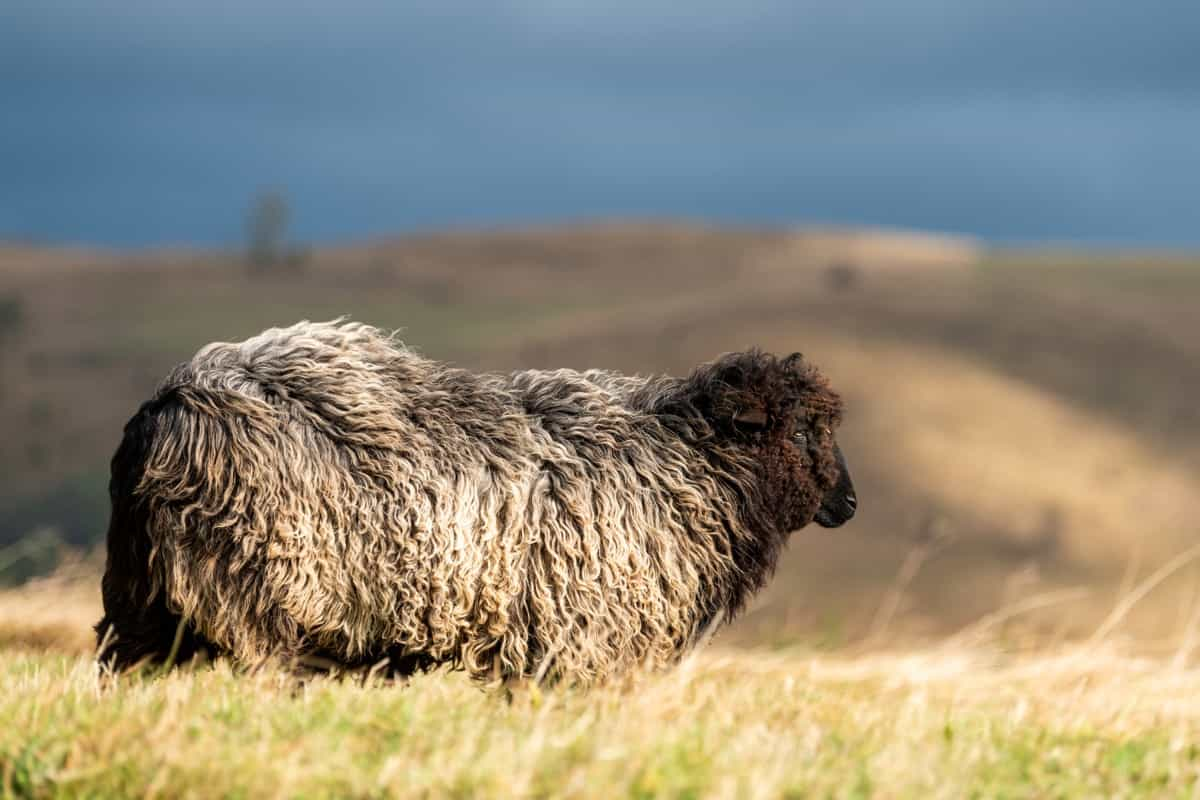The Devon Longwool sheep breed originated in the county of Devon, England, dating back to the 17th century. Developed from local breeds and Spanish Merino imports, it gained recognition for its robustness and wool quality.

All You Need to Know About Devon Longwool Sheep
Significance in Agriculture and Textile Industry
Devon Longwool sheep play a crucial role in sustainable agriculture, known for their hardiness and adaptability to various climates. They excel in grazing and contribute to land management practices, particularly in grassland ecosystems. Renowned for their luxurious fleece, Devon Longwool sheep produce wool with exceptional length, strength, and luster. Their wool is highly sought after in the textile industry for crafting durable and soft fabrics, contributing to the production of high-quality textiles worldwide.
Devon Longwool Sheep Characteristics
Wool, Body Size, and Color
- Wool: Devon Longwools boast a dense, lustrous fleece with well-defined crimp, providing excellent insulation and resilience.
- Body Size: These sheep exhibit a robust build, with an average length of 110-130 cm, height ranging from 70-80 cm at the withers, and a weight typically falling between 80-120 kg.
- Color: Their fleece comes in a striking range of natural hues, including creamy whites, warm browns, and deep grays, adding to their visual appeal and versatility.
Distinctive Features Unique to Devon Longwools
Devon Longwool sheep possess distinctive physical characteristics, notably their long, lustrous fleece with a staple length of up to 12 inches. Their faces are clean and devoid of wool, with dark skin and striking, upright ears. They are robustly built, with sturdy legs and a broad, deep body.
Wool production Devon Longwool
Attributes of Devon Longwool Fleece
- Long Staple Length: Devon Longwool fleece boasts an extended staple length, facilitating easier processing and enhanced durability in textiles.
- Wool Quality Of Devon Longwool: The fleece exhibits a natural sheen, adding aesthetic appeal to finished products.
- Soft Handle: Known for its softness and comfort, Devon Longwool fleece provides a luxurious texture in textile applications.
Applications of Wool in Textile Manufacturing
- Apparel: Wool from breeds like Devon Longwool is prized for crafting high-quality garments, offering warmth, breathability, and resilience.
- Home Textiles: Its durability makes it suitable for rugs, carpets, and upholstery, providing both comfort and longevity.
- Technical Textiles: Wool finds applications in specialized areas like insulation and filtration due to its natural properties, such as flame resistance and moisture management.
Breeding and Genetics
Strategies for Selective Breeding
- Identify desirable genetic traits for improvement, such as disease resistance, yield, or appearance.
- Assess the genetic background of individuals to understand inheritance patterns and potential Devon Longwool breeding practice outcomes.
- Implement controlled breeding programs to ensure mating between individuals with complementary traits.
In case you missed it: Blackhead Persian Sheep: Characteristics, Origin, Uses, Breeding, Lifespan, Price, and Size

Genetic Traits and Preservation of the Breed
- Maintain diverse gene pools to safeguard against inbreeding depression and adaptability to changing environments.
- Implement Devon Longwool genetic preservation efforts, including cryopreservation and genetic banks, to safeguard rare or endangered breeds.
- Regularly assess and manage genetic health to mitigate the risk of inherited disorders and maintain breed vitality.
Diet and Nutrition
Feeding Requirements for Optimal Health and Wool Production
Sheep typically require 2-4% of their body weight in feed daily, consisting of high-quality forage such as grass or legumes supplemented with grains or concentrates. A balanced diet with carbohydrates, vitamins, and minerals. Common ingredients may include hay, grains (like barley or oats), soybean meal, and mineral supplements.
Supplements and Grazing Practices
Supplements like salt, calcium, and phosphorus are essential for sheep health. Additionally, vitamin supplements may be necessary depending on the forage quality and environmental conditions. Rotational grazing ensures access to fresh pasture, promoting both health and wool production. Monitoring grazing areas and adjusting stocking densities help maintain optimal forage quality and quantity.
Health Management in Longwools
Common Health Issues and Preventive Measures
- Foot Rot: Regular hoof trimming and maintaining dry, clean living conditions.
- Internal Parasites: Implementing a strategic deworming program and rotational grazing.
- Fly Strike: Keeping the wool around the hindquarters clean and using fly repellents.
- Mineral Deficiencies: Providing access to mineral supplements and ensuring a balanced diet.
Vaccination and Parasite Control Programs
- Clostridial Diseases: Administering annual vaccinations against clostridial diseases.
- Scab Mite Control: Regularly treating for scab mites with appropriate acaricides.
- Liver Fluke Prevention: Implementing a targeted treatment program based on local prevalence and seasonal risk factors.
- Internal Parasite Control: Rotating anthelmintic classes and conducting fecal egg counts to monitor effectiveness.
Devon Longwool Sheep Shelters
Suitable Living Conditions for Devon Longwool Sheep
Devon Longwool sheep require adequate space for optimal health and comfort. Aim for at least 15-20 square feet per adult sheep to allow freedom of movement and prevent overcrowding. Lambs may need less space initially, but allocate additional room as they grow to accommodate their size. Providing sufficient space minimizes stress, reduces the risk of injury, and promotes natural behaviors such as grazing and resting.
Designing Barns and Shelters for Weather Protection
When constructing shelters for Devon Longwool sheep, prioritize weather protection. Incorporate features such as sturdy roofing to shield against rain, snow, and harsh sunlight. Ensure proper ventilation to avoid moisture buildup and maintain air quality. Additionally, implement adequate drainage systems to prevent flooding during heavy rainfall.
Raising and Handling
Best Practices for Raising Devon Longwool Sheep
- Ensure ample pasture space for grazing, as Devon Longwools thrive on grass.
- Provide quality hay in winter and supplement with minerals.
- Regular health checks and vaccinations are crucial.
- Shear annually for wool and monitor fleece cleanliness.
- Foster a calm environment, as stress adversely affects wool quality.
- Establish a rotational grazing system to maintain pasture health.
In case you missed it: Top 10 Sheep Weight Gain Supplements: Best Sheep Weight Gain Formulas

Tips for Handling and Training Sheep
- Handle sheep calmly and patiently to build trust and minimize stress.
- Use positive reinforcement techniques consistently to teach desired behaviors.
- Understand and respect the natural boundaries and instincts of sheep to avoid unnecessary stress or injury.
- Allow for social interaction with other sheep to promote natural behaviors and a sense of security.
Reproductive Management
Breeding Seasonality and Lambing Practices
Implementing strategic Devon Longwool breeding practices to optimize reproductive efficiency in ewe flocks, including controlled mating, use of synchronized estrus protocols, and advanced reproductive technologies. Establishing appropriate breeding seasons aligned with optimal environmental conditions, ensuring synchronized lambing for ease of management, and employing effective lambing practices to enhance overall flock productivity.
Care for Ewes and Lambs for High Survival Rates
- Regular health checks and vaccinations for ewes to prevent diseases.
- Implementing appropriate nutrition for Devon Longwool sheep tailored to each stage of pregnancy and lactation.
- Monitoring and managing environmental conditions to prevent stress and disease outbreaks.
- Providing supplemental feeding for orphaned or weak lambs to ensure proper growth and development.
Sustainable Farming With Longwool Sheep and Economic Value
Contribution of Devon Longwools to Sustainable Practices
Their ability to thrive in diverse environments reduces reliance on chemical inputs and promotes biodiversity. By grazing on native vegetation, they contribute to land stewardship and soil health, mitigating erosion and improving water retention. The breed’s efficient foraging also minimizes feed costs, enhancing economic viability for farmers.
Market Demand for Wool and Meat Products
Growing consumer awareness of sustainability drives demand for Devon Longwool products. Their wool, prized for its quality and sustainability, appeals to eco-conscious consumers seeking ethically sourced textiles. Similarly, the breed’s flavorful, lean meat meets the demand for premium, locally sourced protein, appealing to discerning consumers and supporting sustainable agriculture.
In case you missed it: Latxa Sheep Breed: History, Characteristics, Price, Size, Breeding, and Raising

Conclusion
Overall, Devon Longwool sheep are a valuable asset to any farm or homestead, offering not only practical benefits such as wool and meat production but also the joy of working with a unique and storied breed. Whether for commercial purposes or as beloved companions, these sheep hold a special place in the hearts of many farmers and enthusiasts around the world.
Note: The images presented in this post are intended solely for representation purposes. The images are meant to serve as visual aids and should not be relied upon as accurate representations of their real-life counterparts.
- Feed Your Flock for Less: Top 10 Tips to Save on Chicken Feed
- Ultimate Guide to Ossabaw Island Hog: Breeding, Raising, Diet, and Care
- Hatching Answers: The Top 10 Reasons Your Chickens Aren’t Laying Eggs
- Eggs and Economics: Breaking Down the Cost of Raising Backyard Chickens
- Defend Your Greens: Proven Methods to Keep Iguanas Out of Your Garden
- Ultimate Guide to Cinnamon Queen Chicken: A Comprehensive Guide for Beginners
- Ultimate Guide to California Tan Chicken: Breeding, Raising, Diet, Egg-Production and Care
- Ultimate Guide to Marsh Daisy Chicken: Breeding, Raising, Diet, and Care
- 10 Types of Chicken Farming Businesses You Can Start for Profits